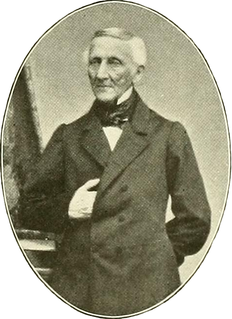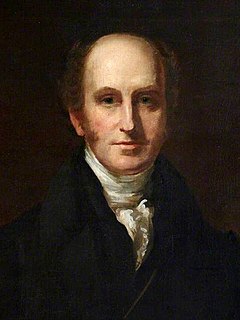John Scott FLS (5 April 1836–11 June 1880) was a Scottish botanist and gardener.

Scotland is a country that is part of the United Kingdom. Sharing a border with England to the southeast, Scotland is otherwise surrounded by the Atlantic Ocean to the north and west, by the North Sea to the northeast and by the Irish Sea to the south. In addition to the mainland, situated on the northern third of the island of Great Britain, Scotland has over 790 islands, including the Northern Isles and the Hebrides.

A gardener is someone who practices gardening, either professionally or as a hobby.
Born at Denholm, [1] he was the gardener at Chatsworth House, Derbyshire, seat of the Dukes of Devonshire, before becoming foreman of the Royal Botanic Garden, Edinburgh, in 1859. He emigrated to India in 1864, with the patronage of Charles Darwin, becoming curator of the Calcutta Botanic Garden in 1865. While in India he carried out numerous botanical experiments and observations on behalf of Darwin.

Denholm is a small village located between Jedburgh and Hawick in the Scottish Borders region of Scotland, UK. The estimated population of Denholm is 600. There is a village green in the centre. It lies in the valley of the River Teviot. Denholm is a Conservation Area listed as 'a planned village as opposed to the traditional unplanned or organic form of village usually found in Roxburghshire.'

Chatsworth House is a stately home in Derbyshire, England, in the Derbyshire Dales 3.5 miles (5.6 km) northeast of Bakewell and 9 miles (14 km) west of Chesterfield. The seat of the Duke of Devonshire, it has been home to the Cavendish family since 1549.

Derbyshire is a county in the East Midlands of England. A substantial portion of the Peak District National Park lies within Derbyshire, containing the southern extremity of the Pennine range of hills which extend into the north of the county. The county contains part of the National Forest, and borders on Greater Manchester to the northwest, West Yorkshire to the north, South Yorkshire to the northeast, Nottinghamshire to the east, Leicestershire to the southeast, Staffordshire to the west and southwest and Cheshire also to the west. Kinder Scout, at 636 metres (2,087 ft), is the highest point in the county, whilst Trent Meadows, where the River Trent leaves Derbyshire, is its lowest point at 27 metres (89 ft). The River Derwent is the county's longest river at 66 miles (106 km), and runs roughly north to south through the county. In 2003 the Ordnance Survey placed Church Flatts Farm at Coton in the Elms as the furthest point from the sea in Great Britain.
He was elected a Fellow of the Linnean Society in 1873 and died at Garvald, East Lothian. [1]

Garvald is a village south-east of Haddington in East Lothian, Scotland. It lies on the Papana Water south of the B6370, east of Gifford. The combined parish of Garvald and Bara, borders Whittingehame to the East, Morham to the North, Yester to the West, and Lauder to the South. It is mainly an agricultural parish. The red freestone once constantly mined in this parish was well known throughout the whole country.












